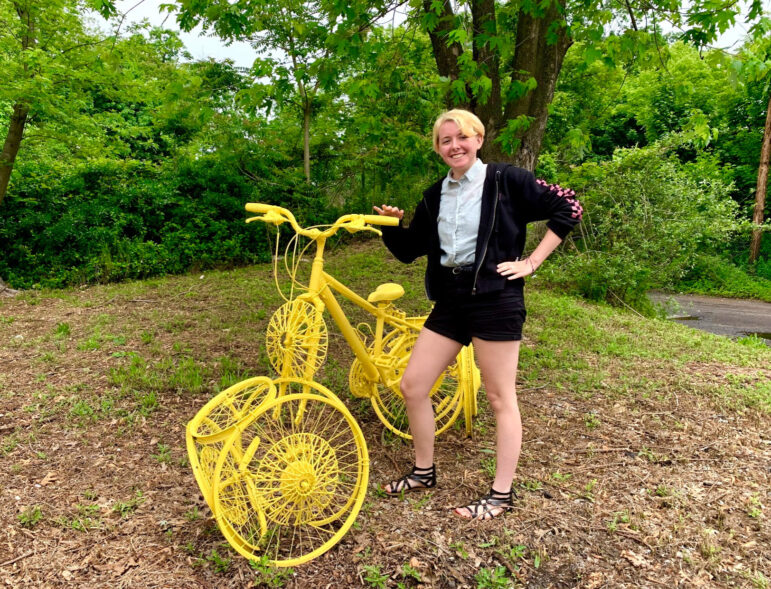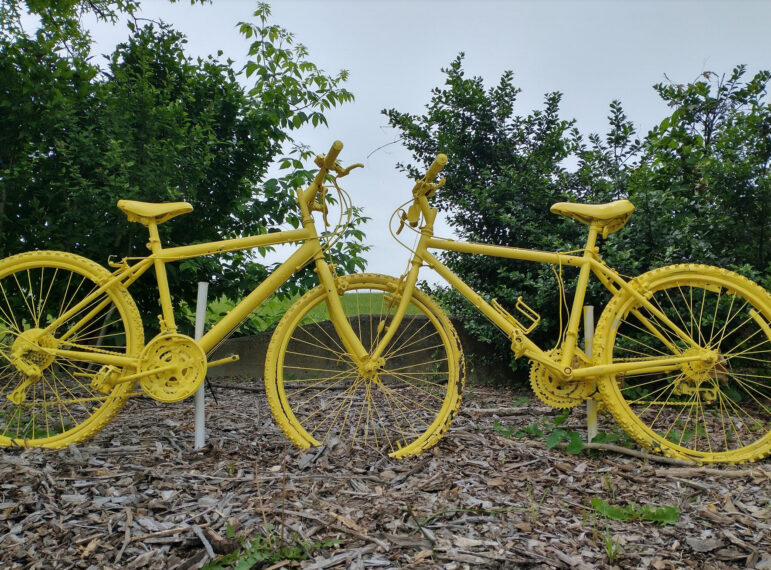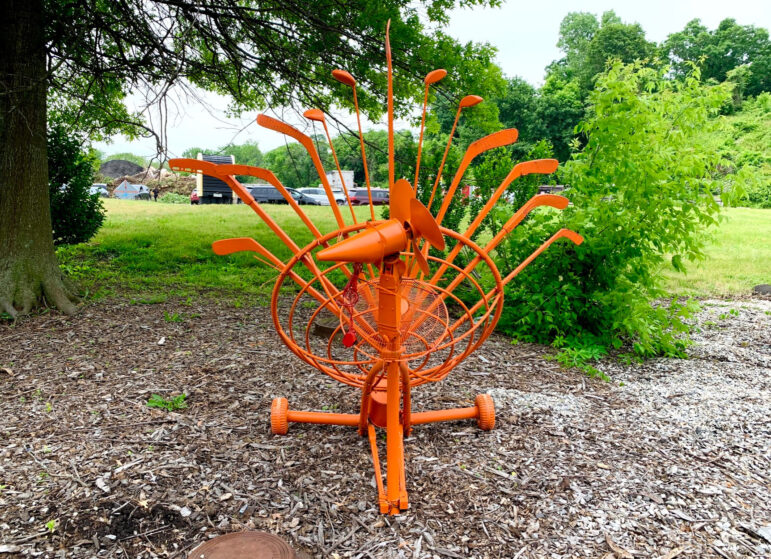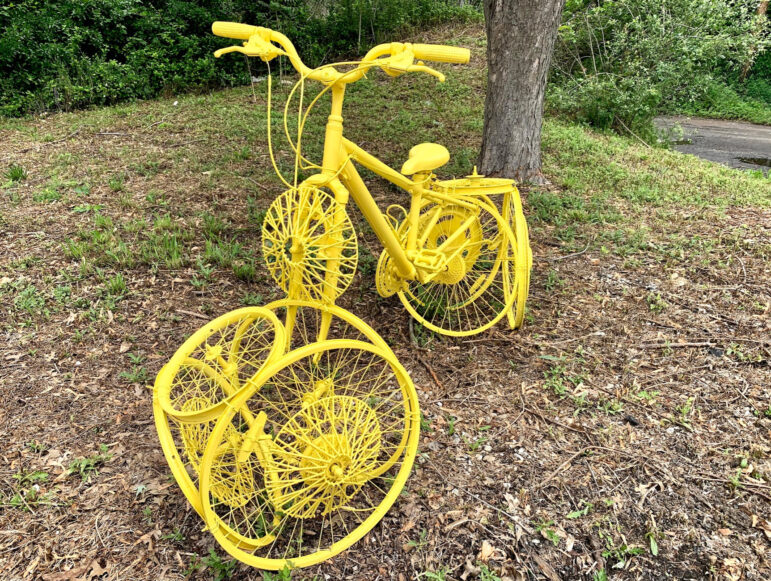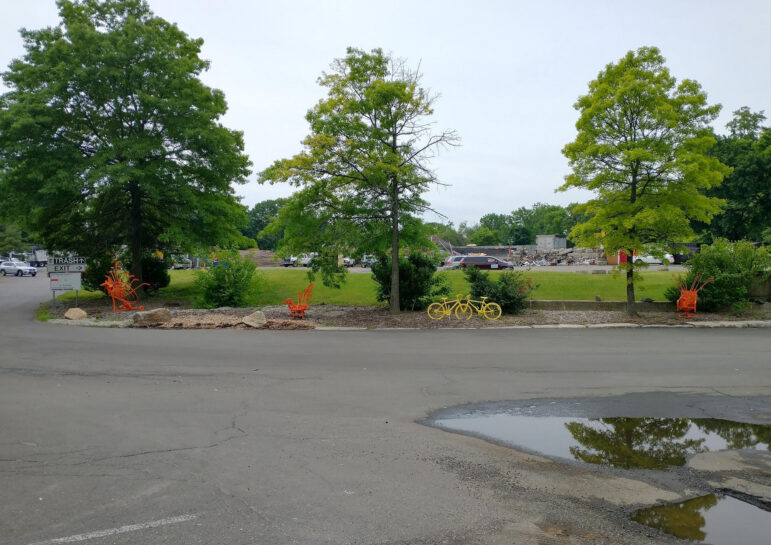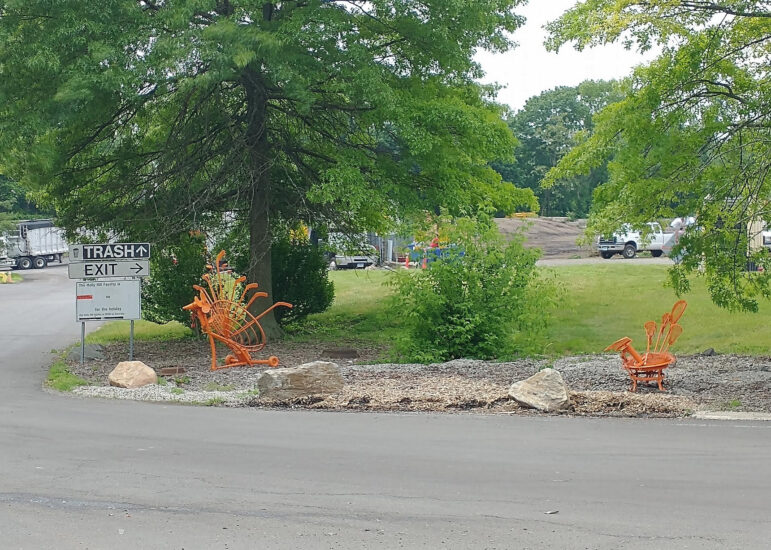By Kade Tibberts and Elizabeth Casolo, GHS Class of 2021
Lacrosse sticks, a fire pit, bicycles—these are all items that can be found at the Holly Hill Transfer Station, affectionately known as “the dump.” However, one local artist and teacher took “one man’s trash is another man’s treasure” literally, recycling disposed objects from the facility before bringing his sculptures back to Holly Hill to be displayed.
Michael Manning, who has been “in and out of the area since 2000,” started as a painter before being recruited in 2015 by former Eastern Middle School Principal Ralph Mayo to teach art.
Beyond teaching at various schools and managing his studio art practice, Mr. Manning serves as an arts mentor at the Boys & Girls Club of Greenwich and co-leads the Developing Artist Program. The program includes field trips, guest speakers and avant-garde creative sessions, all intended to enrich Greenwich students’ understanding of an artist’s purpose.
Manning said that, for some students, “they’ve looked at art in a more narrowly defined way.” To break that conventional view, Manning encourages his pupils to use “offbeat materials,” like wood and screws. Manning tells his students, “Let’s try to make some art out of it.”
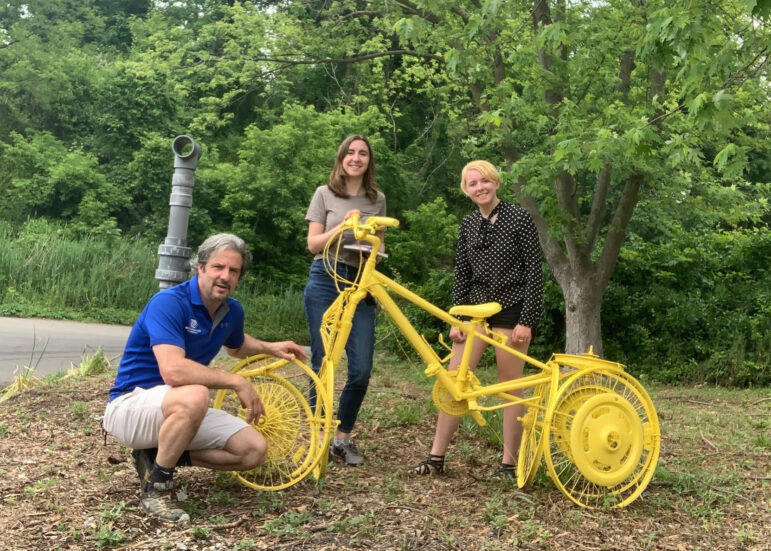
Through this, Manning gives his students another method of personal creative expression. “Once you open it up and consider any method—landscape art, environmental art, collage art, sculpture, photography—there’s so many different things that you can do,” he said.
This inventive mindset played into Manning’s work at Holly Hill.
“I remember taking my kid here [Holly Hill] when he was young… That’s when I started realizing there’s this material here,” Manning said.
Manning started with a set of bikes, painting them yellow. He said, “If you come here, on any given day, there could be 15 bikes just thrown away. And I came one day, and there had to be 30 metal rims with no spokes, so it kind of reminded me of hula hoops, and they were just interesting, so I started with that.”
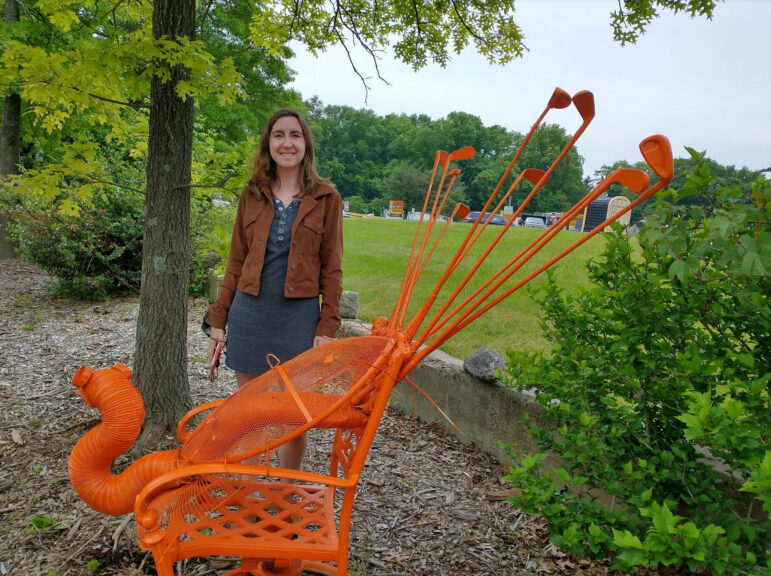
Originally, different pieces were designed for different events. The orange turkey was created for the Greenwich Alliance for Education Turkey Trot (which was canceled this past year due to Covid-19), and the bicycles were placed at the Boys & Girls Club facility at Lake Avenue, Camp Simmons. Manning also has similar pieces at an upscale gallery in the Hamptons.
What the pieces all share is their origin and materials: from none other than Holly Hill. Now, several of his works line the roads within the facility.
Eventually, Manning’s students assisted with the project, with some pieces at Holly Hill spray painted by the students. He said that his students inspired his art to be more “whimsical, like I’m playing around with it.” Manning described himself as an “abstract expressionist” because he emphasizes the process of creating art while embracing the emotions expressed in his works.
Manning also worked with Ben Quesnel—the other director of the Developing Artist Program—on one of the pieces.
This degree of collaboration reflects Manning’s dedication to “Social Practice Art.” Although there may be a “higher social-conscience message” behind a work, Social Practice Art’s foundation is collaboration.
Manning said, “It could be as simple as just doing a community-based art event.” The intent is to engage others while working toward a common goal: producing art. This is especially important in the context of Manning’s work with his students and his volunteer work for the town.
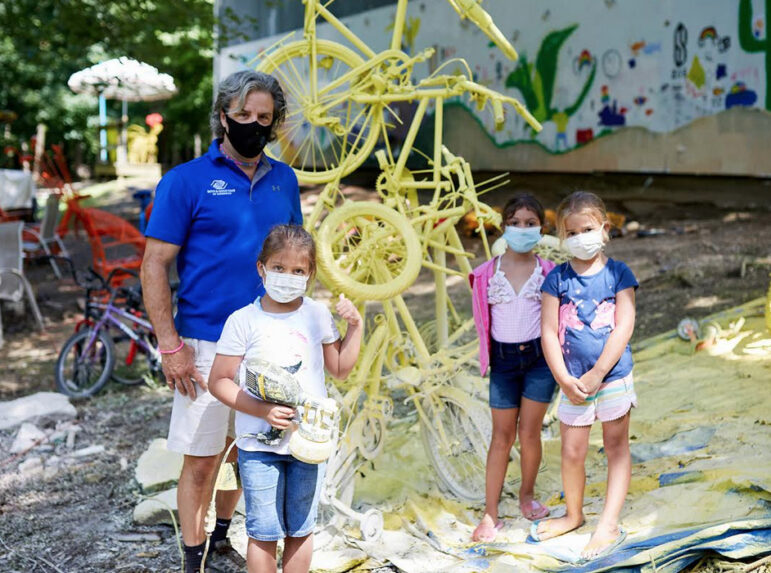
Now Manning aspires to start an artist-in-residence program at the dump, so like-minded creatives could have an opportunity to develop environmentally conscious and playful pieces using reclaimed objects.
Although most of Manning’s recent work has roots in Greenwich, he believes that his message— that art can be found anywhere and everywhere—transcends the town.
“It’s important anywhere,” Manning said. “If you just look at the history of art and how things have changed and what can be considered art, it’s just dramatically opened up.” Whether paints or discarded hockey sticks are one’s medium of choice, in the eyes of Manning, art is boundless.
